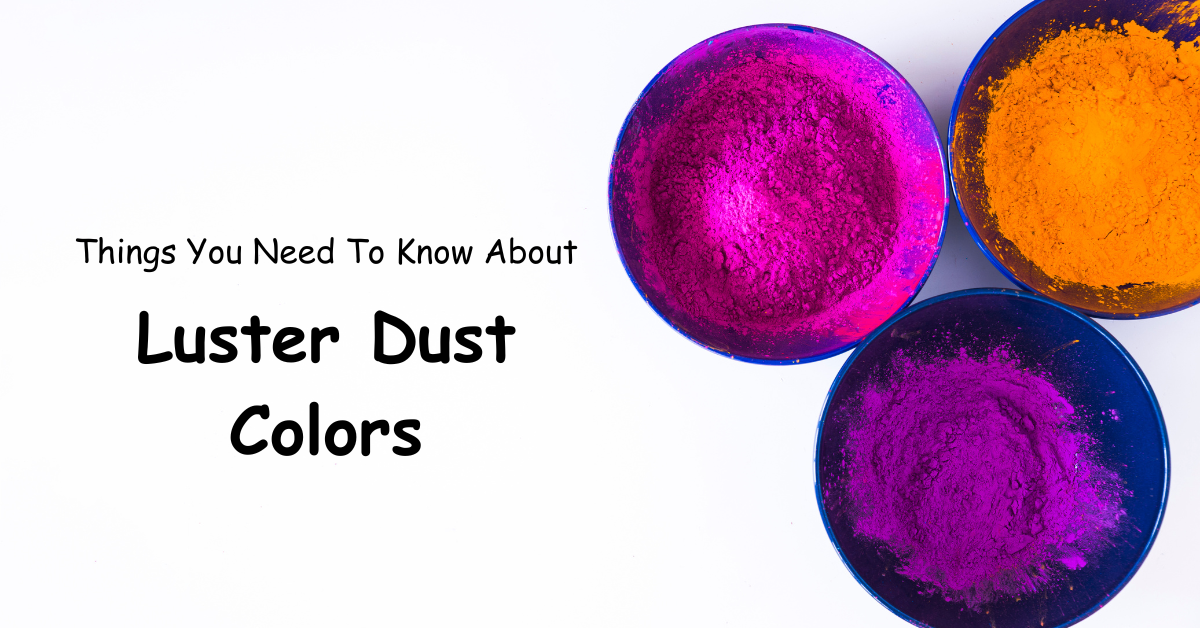Luster dust colors are the preferred choice for confectionary artists, bakers, cake decorators, and cake baking classes in Chennai, enhancing their baked goods into edible creations. It is to be noted that luster dust comes in various colors, giving cupcakes, chocolates, cookies, and other desserts a luxurious and beautiful finish. Hence, this blog will explore what you must know about luster dust colors.
Composition Of Luster Dust Colors:
Luster dust colors are made from a combination of food-grade ingredients that are safe for consumption. The primary components include:
Pearlescent Pigments:
These pigments are responsible for the shimmer and shine of luster dust. They are often made from minerals such as mica and iron oxides and are coated with edible materials like titanium dioxide or silica.
Coloring Agents:
Luster dust may contain food-grade colorants like FDA-approved dyes or natural pigments to achieve the desired color.
Edible Binder:
An edible binder, typically a starch-based substance, is added to the dust to hold the pigments and colorants together in a powder form.
Flavoring:
Some luster dust may contain flavorings to add a subtle taste to the finished product.
Types Of Luster Dust Colors:
Luster dust comes in various colors and finishes, allowing decorators and various bakery classes in Chennai to choose the perfect shade and effect for their creations. Common types include:
Metallic Luster Dusts:
These give a metallic finish, such as gold, silver, bronze, and copper. They are often used for elegant and regal cake designs.
Pearlescent Luster Dusts:
These create a pearly sheen and are available in various colors, including pastels and iridescent shades.
Highlighter Luster Dusts:
These add a bright, concentrated shine to specific areas of a cake or dessert.
Sparkle Luster Dusts:
These contain fine edible glitter particles that add sparkle and glamor to treats.
Application Techniques:
Using luster dust colors effectively requires some skill and practice. Here are some common application techniques:
Dry Dusting:
This method involves applying luster dust directly onto the surface of a dessert with a dry brush. It’s perfect for achieving an even shimmer over a large area.
Mixing With Liquid:
Luster dust can be mixed with clear alcohol (vodka or lemon extract) or a food-grade liquid such as clear vanilla extract to create a paint-like consistency. You can then use a brush to paint designs or details onto your desserts.
Airbrushing:
Some decorators use airbrush guns with luster dust to evenly coat the entire surface of a cake or create gradients and patterns.
Dusting With A Pouncer Or Sponge:
For a more textured or speckled effect, luster dust can be applied using a pouncer or sponge.
Versatility & Creative Uses:
Luster dust colors are incredibly versatile and can be used for various decorative purposes beyond cakes and desserts. Here are some creative uses:
Chocolate Decoration:
Brush luster dusts onto molded chocolates to give them a shiny, metallic appearance.
Sugar Flowers:
Enhance the beauty of sugar flowers by dusting them with pearlescent luster dusts for a realistic and elegant look.
Cookie Decorating:
Add a touch of sparkle to your decorated cookies by dusting them with edible glitter luster dusts.
Cocktail Rims:
Sprinkle luster dusts onto the rims of cocktail glasses to create a stunning presentation for special drinks.
Luster dust colors are a fantastic tool for adding beauty and allure to your culinary creations. They come in various colors and finishes, offer versatility in application, and can be used in a wide range of culinary projects. Join our baking classes in Velachery to let your creativity shine with luster dust as you transform your desserts into edible works of art.


